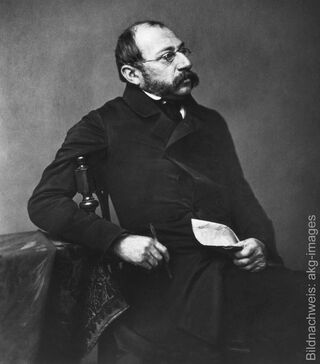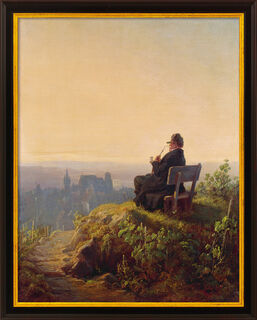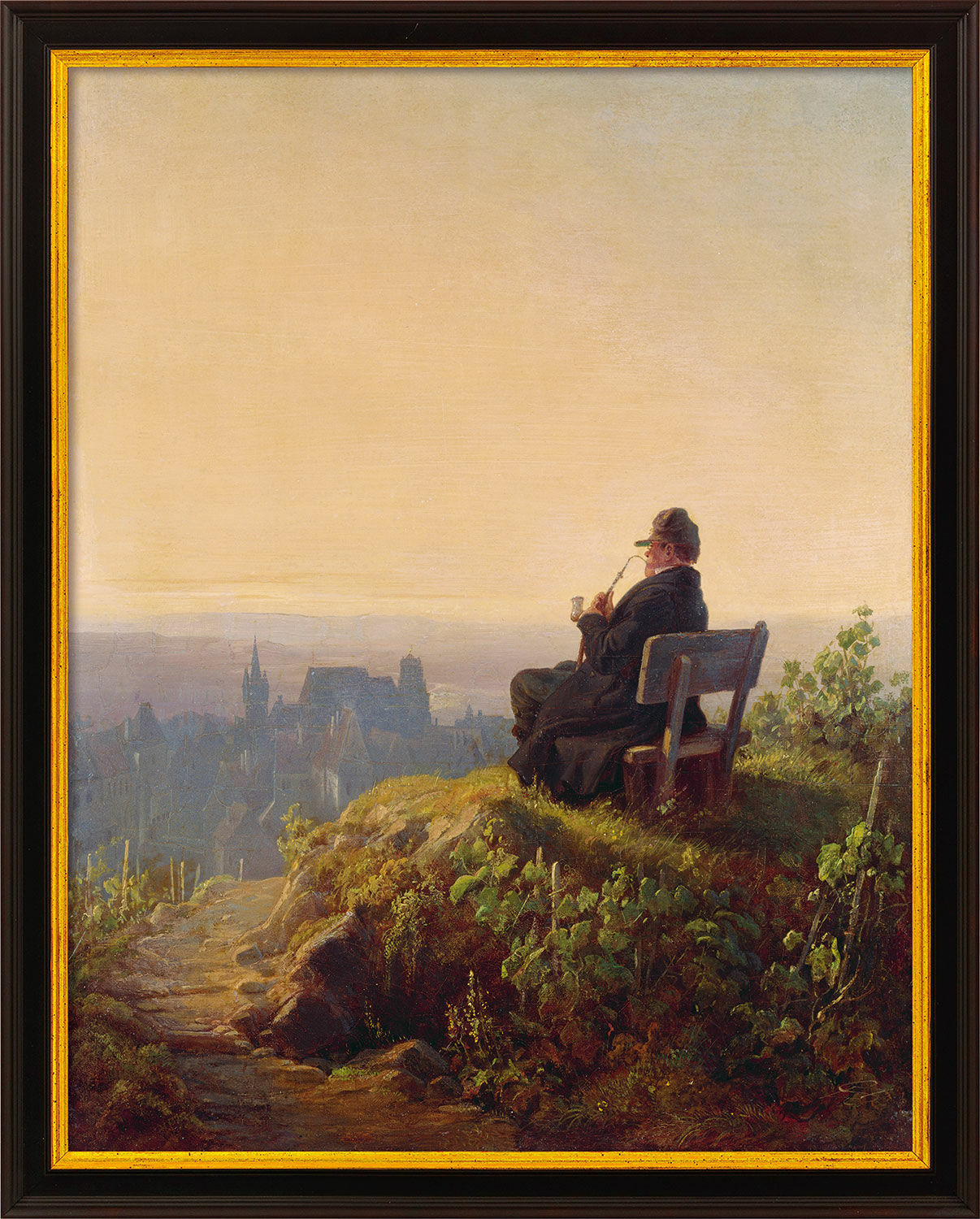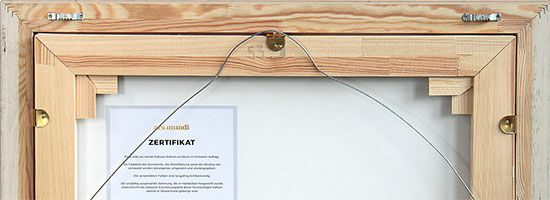Picture "Peaceful Evening", framed


Picture "Peaceful Evening", framed
Quick info
limited, 980 copies | numbered certificate | reproduction on canvas | on stretcher frame | framed | size 58 x 46 cm (h/w)
Detailed description
Picture "Peaceful Evening", framed
The setting sun colours the haze over the city in a rosy red. However, the hiker is happy to have escaped its hectic pace and lights his pipe.
Original: Oil on wood, 29.5 x 23 cm, privately owned.
Edition on artist's canvas with linen structure, on a wooden stretcher frame. Limited edition of 980 copies with a numbered certificate on the back. Framed in a black and gold solid wood frame. Size 58 x 46 cm (h/w).
Frame configurator
Customised picture frame

Frame configurator
Customised picture frame







About Carl Spitzweg
1808-1885 - German painter and draughtsman
Carl Spitzweg was one of the most important artists of the Biedermeier period. He created numerous paintings, oil studies, drawings and watercolours whose peculiar, a whimsical charm made him the most popular representative of the bourgeois genre and landscape painting in southern Germany.
Spitzweg came from a wealthy Munich merchant family and initially completed a degree in natural sciences. An illness led him to the decision to become a painter. He continued to train himself and soon found connections with other colleagues of the Munich school of painting, such as Moritz von Schwind.
Spitzweg is one of the great German painters and draughtsmen of the 19th century. His best-known pictures, such as "The Poor Poet", the "Bookworm" or the "Eternal Wedding Man", show eccentrics of bourgeois society indulging in their respective hobbies.
Carl Spitzweg's imagination and outstanding painting technique were combined with perhaps the most important ingredient: his sense of humour. With wit and affectionate exaggeration, the inveterate bachelor created character studies of quirky eccentrics and romantic encounters - always told lovingly and with a twinkle in his eye. This is how he became one of the most popular German artists. He chose very small formats and portrayed the figures precisely and in detail in their respective milieu. In this way, he achieved a satirical overdrawing of the types that reached into the grotesque. In his later works, he placed more emphasis on the spontaneous, sketchy and moving, which is particularly evident in his landscape depictions.
He was not discovered by art history until around 1900, and throughout his life, he was never as famous as other contemporary painters.
Art and culture set between Romanticism and Realism in the German-speaking countries in the period from 1815 to approx. 1860. The epoch took its name from the magazine "Fliegende Blätter", where the poems by Swabian schoolteacher Gottlieb Biedermaier were regularly published between 1855 and 1857.
Painting of this period was dominated by intimate, comfortable motifs. Masters of the Biedermeier period include Carl Spitzweg, J. P. Hasenclever, G. F. Kersting. Ludwig Richter distinguished himself as an excellent illustrator.
After the German Centennial Exhibition 1906 in Berlin, the term "Biedermeier" established to describe fashion and furniture of simple, unadorned but high-quality craftsmanship.
Depiction of typical scenes from daily life in painting, whereby a distinction can be made between peasant, bourgeois and courtly genres.
The genre reached its peak and immense popularity in Dutch paintings of the 17th century. In the 18th century, especially in France, the courtly-galant painting became prominent while in Germany the bourgeois character was emphasised.






